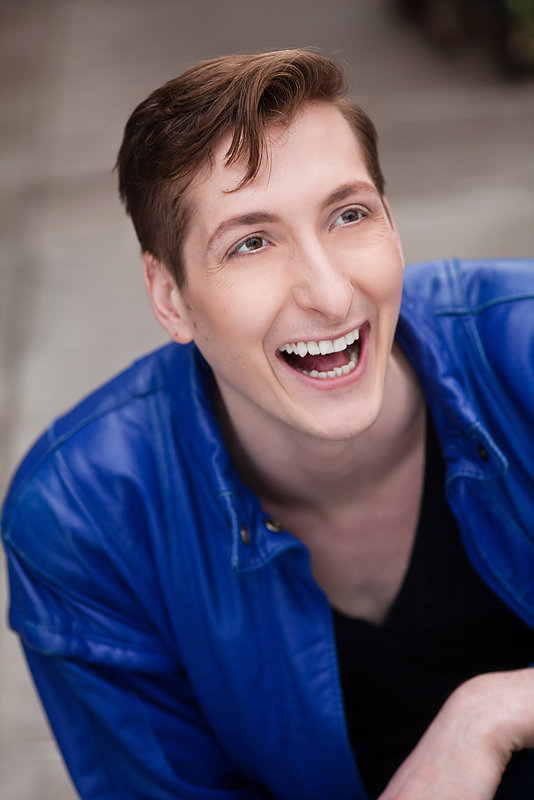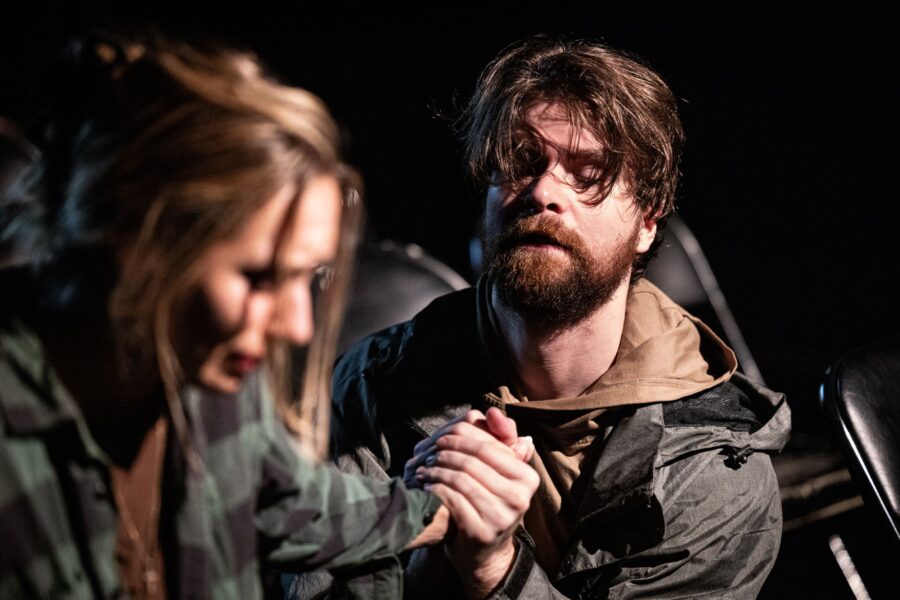“Flight Risk” is a new play written by Dakota Silvey, that explores whether forgiveness for a temporary moment of weakness is possible after a lifetime of doing good. Honesty and truth elude when a midwife and a hunter suddenly become trapped in the wilds of Alaska along with their wounded pilot. Fast-forward to some near-death confessions, which will leave people wondering who they can trust.

I am scheduled to see “Flight Risk” tomorrow (the tickets look like plane tickets!), and in advance of my night at the theatre, I arranged for a Q&A with Dougie Robbins, the play’s director, to learn about his experience directing the show and other exciting works he has coming up.
What was it that drew you to directing this particular play?
Well, to start, it was written by my good friend Dakota Silvey- that’s always a great entry to a script! This particular play had a really collaborative process, so it was impossible not to be drawn in as he and I would sit and brew ideas together over all the different possibilities of what the play could be. Getting new drafts from Dakota and seeing the story grow was a little bit like getting a new Christmas present to unwrap every month! After he sent me a rehearsal draft, I started dissecting the script, and seeing the layers of meaning and depth he created brought me down a really fun rabbit hole as I prepared for rehearsals.
How did you work with the actors to authentically portray the tension of the dynamic between truth and lies in the face of life-threatening situations?
I tend to work with these actors on the circumstances of the moment they are in. The dialogue and the story that Dakota has written give us all of the information that we need as an audience to understand his play. I focus the actors on the moment they are in, the action they are playing, and why. It involves breaking the scene down at the table, so all the actors know what they are doing in the scene, and then giving the time and freedom needed in rehearsal for them to discover and explore different choices.
What challenges did you encounter while bringing “Flight Risk” to the stage, and how did you overcome them?
Speaking of life-threatening situations- developing the focus and the stamina to sustain a life-and-death scenario over the course of an entire play is an incredible challenge! It involves incredible amounts of physical and mental energy from the actors, which they have done incredibly well. Running the show was the best solve for this- the first time we ran the entire play, I thought the actors were going to pass out in the final scene! Now, as we approach the opening, they start the scene and take the energy even higher, which is a joy to see.
How did your collaboration with playwright Dakota Silvey influence your directorial vision for the production?
Dakota and I worked very closely on this play. I was at the first reading of the first 10-minute draft of this piece, and was with it ever since. Collaboration for the two of us usually means hanging out and talking about the play over a beer, spinning ideas, and seeing what excites each other. We did this for a few months, with me not knowing where any of these conversations would lead. Then Dakota went off for a few months to write, and one night, I got a draft of the first act in my email; a short while later, a full draft came in, and we were watching actors read it. So, I was really lucky to have a pretty good idea of what the playwright was thinking as I prepared my vision for the production, I didn’t have to interpret the playwright’s intentions or themes, I could get it from the source. I was even luckier to have Dakota in rehearsals most of the time, which meant we could keep an open flow of communication on how it was going, what we thought may need some extra work, and what was inspiring us.
How did you create an engaging experience for audiences?
I wouldn’t describe this play as fully immersive—there is still a boundary between the audience and the play, even if that line is so thin it is non-existent. However, I had an incredible amount of fun creating an experience with my designers that starts to draw the audience in the moment they walk up to the theater and see the window display. By the time the play starts, the audience should be ready for takeoff, so to speak.
What was your experience working with the talented cast of actors, including Erik Van Conover, Conor Andrew Hall, and Grace Sallee?
I don’t know if I could imagine doing this play with different actors at this point. This is an ensemble that cares deeply about the play and its characters- we would have in-depth conversations about their characters’ histories, psychologies, and motivations. I would always be surprised at the depth and detail they had put into their creations, and I would encourage them to take this work and bring it into the scene we were working on. I think my favorite thing about this group is that they keep the scenes alive and fresh, and they have that rare ability to do things slightly differently every time without changing anything that is “set” or pivotal to the scene.
Tell us about a memorable moment you experienced during rehearsals or performances of “Flight Risk.”
Sure, I want to shine a little love on the technical team and process for this production. The load-in and tech schedule was incredibly brief, we didn’t have much time in the space prior to opening, so it was all hands on deck at all times. The energy was chaotic, but also this joyful adrenaline high, I’d be working with, I don’t know, lights, and run down to the deck to answer set questions, then zip somewhere else to handle another question, and while I am doing this all the designers and technicians are working at full pace, coordinating with each other beautifully, and sharing the space. It was a really beautiful moment of theater at its finest to me- a group of artists coming together to create something wonderful in no time at all. While this was all happening, one of my best friends, David J Lavin, who is a visual artist, was creating this big, beautiful mural on this giant chalkboard that was sitting unused in the lobby. We were all running around like crazy, and in his quiet way, he was creating beautiful art in the lobby. As the day went on, I’d watch people darting in and out of the lobby stop and gape at his work as it was developing, and even if they were tired, they would get this lift when they saw his work. Probably my favorite moment.
What do you hope audiences will take away from experiencing “Flight Risk”?
Well, I hope they have a little fun—which I’m sure they will. But this play is a dark comedy, and to that end, it isn’t a complete and total resolution at the end; there isn’t that final, satisfying cadence we sometimes expect. I hope the audience feels that, on a visceral level, they will find themselves thinking of this play after the fact and that they will be comparing themselves in relation to the characters a bit.
Are there any future projects or aspirations you have in the world of theatre, and how has your journey as a director shaped your artistic vision?
I’m working on another original work #hellisotherpeople by Leah M Bickley- an critical investigation on the role social media plays in our life. As a director, I’ve been shaped a lot by my experience as an actor and as a teacher. Of course, most New York theatermakers dream of Broadway or Off-Broadway, but I love the sense of community that is created at a theatrical organization or a school. It’s been a long-time dream to be an artistic director of a theater, so I can foster artists the same way I have been, create education programs, and create art and programming for the community my theater serves.
 Catch “Flight Risk” at the Gene Frankel Theatre through March 10th!
Catch “Flight Risk” at the Gene Frankel Theatre through March 10th!

